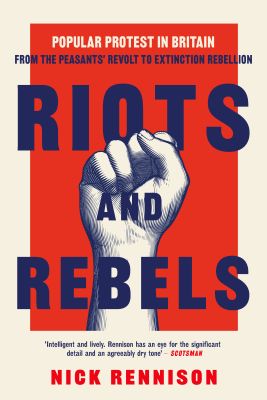In 1381, a large army of people marched through the south-east of England to London, demanding an end to unfair taxation and threatening the rule of the boy-king, Richard II. During the eighteenth century, food riots, riots in protest at land enclosure, and riots targeting religious groups and foreigners regularly occurred. In the following century, mass gatherings demanded reform of the electoral system which allowed only a tiny proportion of the population to vote. In the early twentieth century, suffragettes chained themselves to railings, took part in huge demonstrations and endured prison sentences in pursuit of the vote for women. Recent decades have seen tens of thousands of people take to the streets of London and other cities to protest against the Iraq War and, in the last year, the war in Gaza. The only power otherwise powerless people possess lies in their numbers. Riots and Rebels is an examination of how they have exercised that power over the centuries and how governments have reacted to it. From the so-called Peasants' Revolt to Just Stop Oil, via the anti-Catholic Gordon Riots of 1780, Luddites breaking machinery which threatened their livelihood, the infamous Peterloo Massacre of 1819, the Chartist demonstrations of the 1830s and 1840s, 1887's Bloody Sunday and many other, often violent events, Nick Rennison provides a concise, compelling account of popular protest in Britain.

